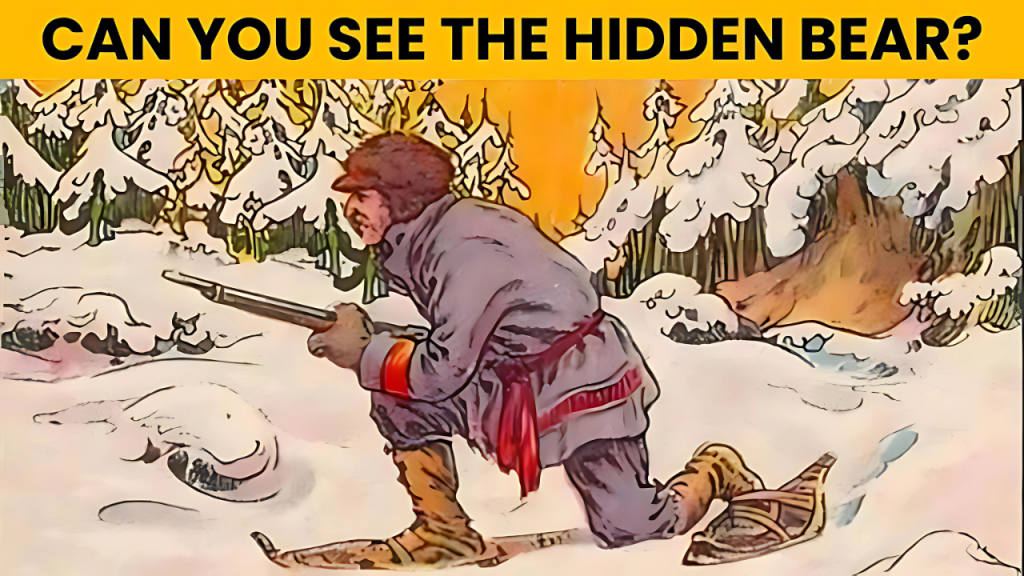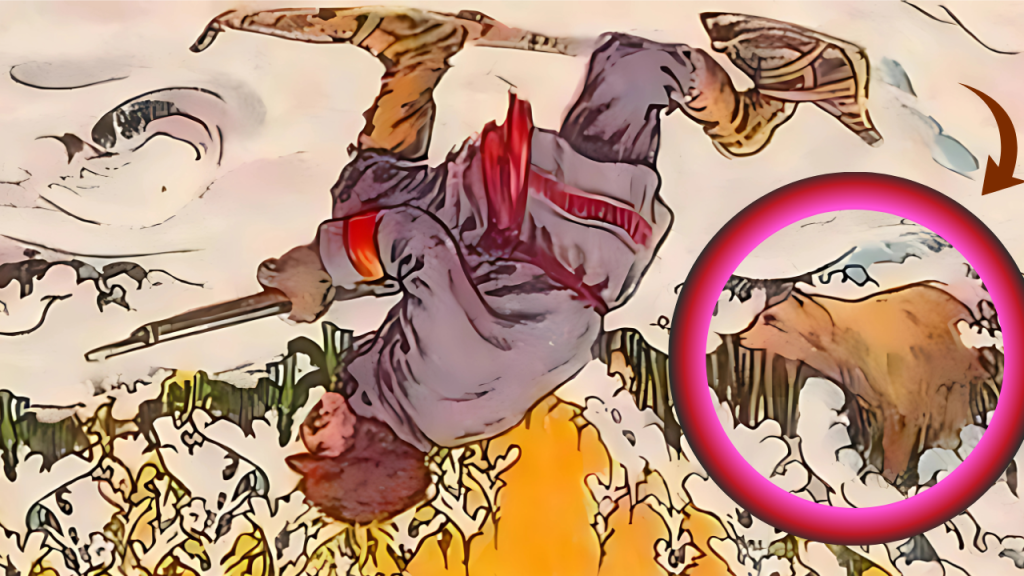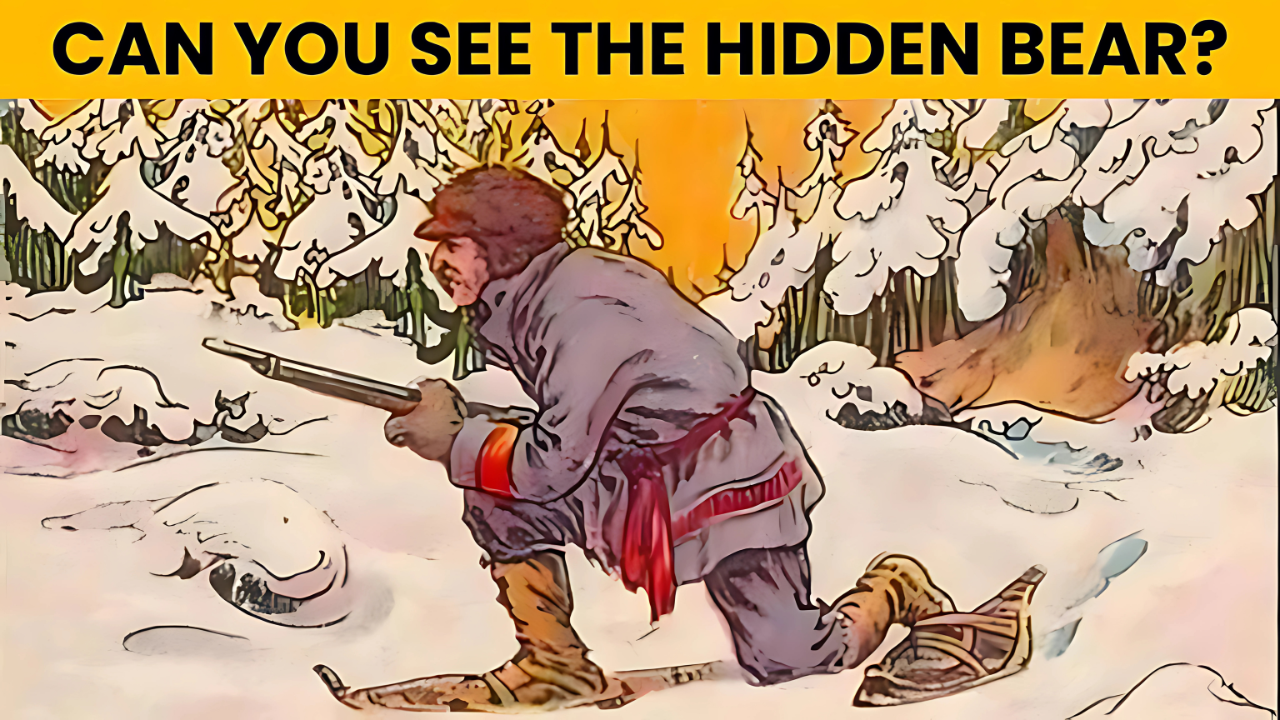Have you ever stared at an image so long your eyes started playing tricks on you? That strange sensation when patterns emerge from chaos is exactly what makes optical illusions so captivating.
The latest puzzle taking social media by storm asks a seemingly simple question: can you find the hidden bear in just 10 seconds? This mind-bending challenge has left thousands scratching their heads in confusion.
I first encountered this peculiar image while scrolling through my feed on a lazy Sunday afternoon. What appeared to be just a woodland scene quickly revealed itself as something far more clever.
Let’s dive into why this particular illusion has captured everyone’s attention, how it works, and whether you’ve got what it takes to beat the clock. Trust me—it’s trickier than it looks!
Why Our Brains Love Optical Illusions
The human brain is constantly working overtime to make sense of the world around us. When we encounter visual puzzles like the hidden bear illusion, our pattern recognition systems kick into high gear.
Something fascinating happens in our visual cortex when we stare at these puzzles. Our brain doesn’t passively receive images like a camera—it actively constructs what we “see” based on expectations and past experiences.
I’ve always been drawn to these visual conundrums since childhood, collecting books filled with impossible objects and ambiguous figures. There’s something deeply satisfying about that “aha” moment when the hidden image finally reveals itself.
Psychologists believe our attraction to optical illusions stems from the brain’s love of solving problems. Each solved puzzle gives us a little hit of dopamine—the feel-good neurotransmitter that reinforces reward-seeking behavior.
The Science Behind Visual Puzzles
When you stare at the hidden bear image, your visual system is engaging in what scientists call figure-ground organization. This fundamental perceptual process helps distinguish objects from their backgrounds.
The clever designers of these illusions deliberately play with contrast, shadows, and negative space. They understand that our brains prioritize certain visual patterns while filtering out others.
My neuroscience professor once explained that optical illusions effectively “hack” our visual processing systems. They exploit shortcuts our brains have developed through evolution to process information efficiently.

These mental shortcuts usually serve us well in everyday life. However, when presented with carefully crafted illusions, these same shortcuts can lead us astray in fascinating ways.
Why Some People Spot It Faster Than Others
Have you noticed how some friends can immediately point out the hidden image while others stare blankly? This disparity isn’t necessarily about intelligence but relates more to cognitive flexibility.
Some individuals naturally possess a more adaptable visual processing system. They can switch between seeing the “forest” and the “trees” with remarkable ease.
I’ve observed this firsthand during family game nights. My sister consistently spots hidden patterns faster than anyone else, regardless of age or education level.
Research suggests that regular practice with visual puzzles can improve this ability over time. It’s similar to how musicians develop perfect pitch through constant exposure and training.
The Viral Bear Illusion: What Makes It Special
Unlike many optical illusions that rely on geometric patterns, the hidden bear challenge uses environmental camouflage. The cunning design incorporates the animal’s silhouette into natural elements.
When I first attempted this puzzle, I made the common mistake of scanning the image too quickly. The key, as with many visual challenges, lies in relaxing your focus slightly.
The creator brilliantly used shadows and textures to conceal the bear’s outline. What appears to be random foliage or rock formations actually forms parts of the animal when viewed from the right perspective.
This particular illusion went viral partly because of its perfect difficulty level. It’s challenging enough to stump many viewers, yet solvable enough that success feels attainable.
Breaking Down the Image Components
Looking closely at the puzzle image, you’ll notice deliberate use of contrasting elements. The arrangement of light and dark areas creates visual noise that disguises the bear’s form.
The designer has cleverly incorporated the bear’s features into what initially look like unrelated objects. Ears might appear as distant treetops, while the snout could be mistaken for a rock formation.
I spent nearly a minute staring at the image before recognizing that my brain was misinterpreting certain patterns. Once I adjusted my perception, the hidden animal seemed almost obvious.
This type of camouflage mimics how actual animals hide in nature. Bears, in particular, are masters of blending with their surroundings despite their considerable size.
Why This Illusion Captivated Social Media
The combination of a tight time constraint and familiar subject makes this challenge irresistibly shareable. Who doesn’t want to prove they have superior perception to their friends?
I watched the challenge spread through my social networks like wildfire. People tagged friends, challenged family members, and debated solution strategies in lengthy comment threads.
The puzzle’s adaptability to different platforms helped its viral spread. Whether shared as a static image on Facebook or as a timed challenge on TikTok, the core appeal remained intact.
Content that engages multiple generations tends to perform exceptionally well online. Grandparents and grandchildren alike can appreciate the simple joy of discovering a hidden image.
Tips and Tricks to Spot the Hidden Bear
After analyzing numerous successful attempts, I’ve identified several strategies that can help solve this visual puzzle. First, try unfocusing your eyes slightly rather than staring intensely.
Sometimes viewing the image from different angles helps reveal the hidden form. Tilting your head or looking at the screen from a distance can trigger that crucial perspective shift.
I found that tracing the outline of shapes with my finger sometimes helps my brain separate foreground from background elements. This tactile approach engages additional sensory processing.
Remember that the bear isn’t necessarily positioned how you might expect. Don’t limit yourself to searching for a perfectly posed, front-facing animal figure.
Optical Illusion Answer

Common Mistakes People Make
The biggest hurdle for most viewers is fixating on the wrong areas of the image. Our attention naturally gravitates toward the brightest portions or most defined shapes.
I’ve noticed people tend to overthink these challenges. The more desperately you search for something specific, the more likely your brain is to overlook the actual solution.
Another frequent error is scanning the image too systematically. Grid-like searching often fails because optical illusions specifically exploit our predictable visual patterns.
Many viewers give up just seconds before they would have discovered the solution. Visual puzzles often require that brief moment of mental reset when the answer suddenly becomes clear.
Psychological Benefits of Solving Visual Puzzles
Beyond mere entertainment, engaging with optical illusions like the hidden bear challenge offers genuine cognitive benefits. These puzzles exercise our visual processing systems in unique ways.
Regular practice with these brain teasers can improve your overall attention to detail and observational skills. I’ve noticed my own ability to spot subtle patterns has sharpened over years of enjoying these puzzles.
The satisfaction of solving a difficult illusion triggers a real sense of accomplishment. This positive reinforcement encourages continued engagement with mentally stimulating activities.
Some educators and therapists even utilize optical illusions as tools for improving focus and concentration. The applications extend well beyond casual entertainment.
How This Illusion Compares to Other Famous Visual Puzzles
The hidden bear challenge follows in the tradition of other beloved optical illusions like the Rubin vase (which can be seen as either two faces or a vase) and the famous “young woman or old woman” ambiguous figure.
While those classic examples rely on figure-ground reversal, this bear illusion employs more subtle techniques of camouflage and environmental integration. The difference creates a uniquely challenging puzzle.
I find this modern iteration particularly interesting because it combines natural elements rather than abstract shapes. The contextual setting adds layers of complexity not present in more geometric illusions.
Unlike static optical illusions from psychology textbooks, this puzzle incorporates the element of time pressure. The 10-second limit transforms a casual observation into an adrenaline-fueled race.
Historical Context of Hidden Object Puzzles
Hidden figure puzzles have entertained humans for centuries, from ancient Chinese paintings with concealed images to the popular “Where’s Waldo?” books of more recent decades.
I collected many such puzzle books as a child, spending countless hours searching for camouflaged animals in intricate jungle scenes. The hidden bear challenge taps into that same timeless appeal.
These types of visual games transcend cultural and language barriers. A puzzle that challenges you to find a concealed image requires no translation to be appreciated worldwide.
Anthropologists suggest our fascination with hidden objects may stem from evolutionary advantages in spotting camouflaged predators or prey. What began as survival necessity has evolved into entertainment.
Creating Your Own Hidden Image Challenges
After studying numerous examples, I’ve experimented with creating similar puzzles. The key lies in balancing difficulty with solvability—too easy and it’s boring, too hard and it’s frustrating.
Digital editing tools make it relatively simple to blend objects into complex backgrounds. I’ve found that subtle color adjustments and strategic shadow placement create the most effective illusions.
My early attempts were admittedly too obvious. The true art of crafting these puzzles lies in making the hidden element simultaneously present yet disguised within the overall composition.
Sharing homemade visual puzzles with friends provides a unique satisfaction. There’s something delightful about watching someone’s face when they finally spot your cleverly hidden creation.
When Optical Illusions Go Viral: The Psychology of Sharing
The hidden bear challenge exemplifies what makes content shareable in today’s digital landscape. It’s simple to understand, quick to attempt, and creates a personal challenge that invites comparison.
I’ve observed how these puzzles often spark friendly competition. “I found it in 8 seconds!” comments inevitably lead to others attempting to beat that time or questioning the claim.
The brief nature of the challenge perfectly suits our shortened attention spans. When scrolling through endless content, a 10-second puzzle offers an ideal micro-entertainment experience.
Psychologists note that sharing our successes with these challenges serves as a form of social signaling. Successfully spotting the hidden bear subtly communicates our perceptiveness to others.
The Role of Time Pressure in Viral Challenges
Adding that 10-second countdown transforms a simple hidden object puzzle into something more thrilling and urgent. The time constraint creates genuine tension and amplifies the satisfaction of success.
I remember my heart actually racing the first time I attempted this challenge with a timer running. The pressure makes success feel more meaningful and failure more motivating for another attempt.
Time limits also make these challenges more standardized and comparable. Without the 10-second rule, people might spend varying amounts of time before discovering the hidden bear.
For content creators and marketers, incorporating time elements into visual puzzles dramatically increases engagement metrics. People spend longer with the content and are more likely to comment with their results.
Why We Love Challenging Our Perception
At a fundamental level, optical illusions remind us that our perception isn’t infallible. There’s something profoundly humbling and fascinating about realizing our brains can be tricked so completely.
I’ve always found comfort in these reminders that reality isn’t as objective as we pretend. What we “see” is always an interpretation—a story our brain constructs from limited sensory data.
These visual puzzles also connect us with our innate curiosity. The same drive that pushes scientists to explore unknown frontiers motivates us to stare at an image until we solve its secrets.
For many of us, these challenges provide a momentary escape from everyday concerns. In those focused seconds of searching for the hidden bear, other worries temporarily fade from consciousness.
Frequently Asked Questions
Why can’t I see the hidden bear even after 10 seconds?
This is perfectly normal! Everyone’s visual processing works differently, and some people may take longer to spot hidden patterns than others.
Does practice really help with solving optical illusions? Yes, absolutely. Regular exposure to visual puzzles can train your brain to recognize patterns more quickly and effectively over time.
Are some people naturally better at spotting hidden images?
Research suggests that certain individuals do have naturally stronger pattern recognition abilities, though these skills can be developed with practice.
Why do optical illusions go viral so easily? They combine universal appeal, instant engagement, and encourage sharing through competition and the urge to challenge others.
Can optical illusions improve brain function?
While not a miracle cure, regularly engaging with visual puzzles may help maintain cognitive flexibility and observational skills.
What makes the hidden bear illusion particularly challenging?
The bear is camouflaged using natural elements and shadows, making it blend seamlessly with the background environment.
Should I be concerned if I can’t solve these puzzles quickly?
Not at all! These challenges are meant to be fun, not diagnostic tools. Everyone’s brain processes visual information differently.
Do children typically solve these puzzles faster than adults?
Sometimes yes, as children often approach visual problems with fewer preconceptions about what they “should” be seeing.
Can optical illusions like this cause eye strain?
Prolonged intense focusing can temporarily tire your eyes, so remember to blink regularly and take breaks when needed.
Where can I find more puzzles like the hidden bear challenge?
Many websites and social media accounts specialize in optical illusions and brain teasers—a quick search will reveal countless options.
The hidden bear optical illusion represents more than just a fleeting internet trend. It taps into our fundamental human fascination with perception and reality.
Next time you encounter such a challenge, remember that the journey of discovery is often more valuable than the destination. Whether you spot the bear in 3 seconds or 30, the cognitive exercise benefits your brain either way.
So, did you manage to find the hidden bear within the 10-second limit? If not, perhaps try again with these new insights. And if you succeeded, challenge a friend and see how their perception compares to yours!
